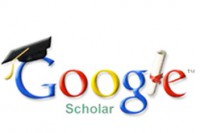Communication Strategies in English Conversations
DOI:
https://doi.org/10.18196/ftl.112Abstract
This research aims to reveal communication strategies used by students of the English Education Department of a university in Indonesia in English conversations and to find out the moments when the strategies were used. This research employed an interlanguage analysis. There were four par- ticipants who were asked to converse under a certain picture and was audio-recorded, transcribed, coded, and analysed. The findings show that the participants employed thirteen strategies when they were having English conversations.
References
Dörnyei, Z., & Scott, M. (1995). Communication strategies: An empirical analysis with retrospection. In J.S. Turley & K. Lusby (Eds.) Selected papers from the proceedings of the 21st Annual Symposium of the Deseret Language and Linguistic Society (p. 155-168). Provo, UT: Brigham Young University.
Dornyei, Z. & Scott, M.L. (1997). Communication Strategies in a Second Language: Definitions and Taxonomies. Language Learning. 40, 173–210
Ellis, R. (1994). The Study of Second Language Aquisition. USA: Oxford University Press.
Muho, A. & Kurani, A (2011). Learning strategies in second language learning and teaching. Mediterranean Journal of Social Sciences. Vol 2(3). ISSN 2039-2117
Richards, J.C. et al. (1992). Longman dictionary of anguage teaching and applied linguistics. (Second edition) Harlow, Essex: Longman Group UK Limited
Selinker, L. (1972). Interlanguage. IRAL, 10, 209–231.
Spromberg, Sarah. (2011). Communication Strategies Used by High School English Language Learners in Multilingual Classrooms. New York: Hunter College
Tarone, E. (1980). Communication strategies, foreigner talk and repair in interlanguage. Language Learning, 30, 417–431.
Tarone, E (2006). Interlanguage. Elsevier. 747-750
Ya-ni, Zhang. (2007). Communication strategies and foreign language learning. US-China Foreign Language 43–48/doi=10.1.1.87.2984
Downloads
Published
How to Cite
Issue
Section
License
Copyright
Authors retain copyright and grant the journal right of first publication with the work simultaneously licensed under a Creative Commons Attribution-ShareAlike 4.0 International License that allows others to share the work with an acknowledgment of initial publication in this journal.
Authors are permitted and encouraged to post their work online (e.g., in institutional repositories, social media account, or on their website) after the article getting published in the journal, as it can lead to productive exchanges and earlier and greater citation of published work (See The Effect of Open Access).License
You are free to:
- Share — copy and redistribute the material in any medium or format
- Adapt — remix, transform, and build upon the material for any purpose, even commercially.
Attribution — You must give appropriate credit, provide a link to the license, and indicate if changes were made. You may do so in any reasonable manner, but not in any way that suggests the licensor endorses you or your use.
ShareAlike — If you remix, transform, or build upon the material, you must distribute your contributions under the same license as the original.
- No additional restrictions — You may not apply legal terms or technological measures that legally restrict others from doing anything the license permits.


.png)





